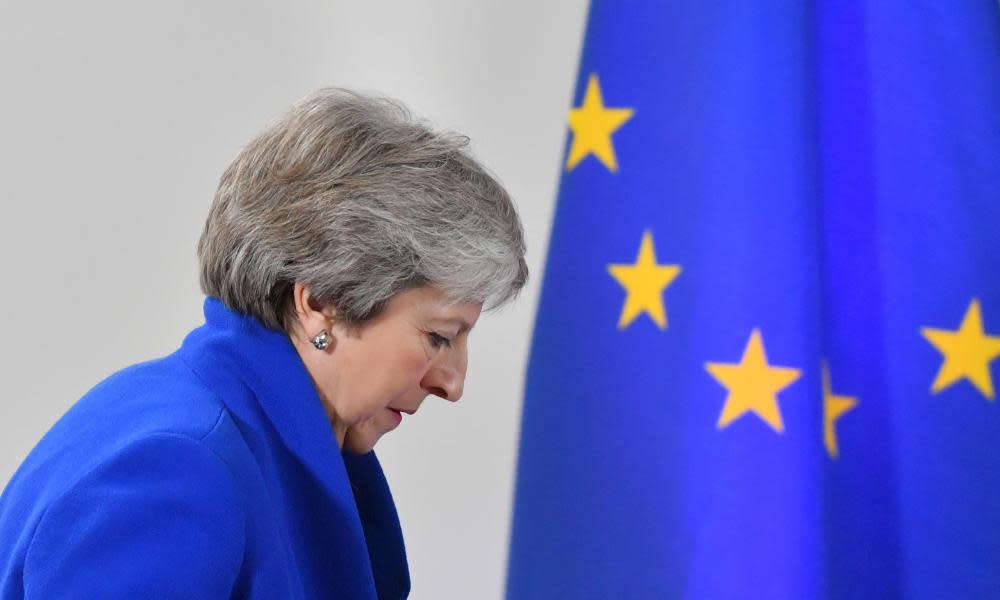May’s real plea to the EU: save me from a second referendum

It’s Thursday, and so the crisis of the day for Theresa May is a make-or-break meeting with her European Union counterparts in Brussels.
Having achieved what can only be described as a humiliating victory last night – 117 of her own MPs voted to get rid of her – the prime minister now seeks concessions from the EU that she hopes will make her 585-page withdrawal agreement more palatable to hardline Brexiteers and the 10 Democratic Unionist MPs who prop up her government.
Last night, her cabinet supporters – “allies” is too strong a word – expressed a frankly mysterious level of confidence that she will squeeze from Brussels “legally binding reassurances” on the proposed backstop mechanism: the device that would keep the UK in the customs union while the apparently intractable Irish border issue is resolved.
I am sure that the EU will indeed make clear (yet again) that it sees the backstop as an insurance policy rather than an institutional objective; that it has no desire to use the mechanism any longer than is necessary; and that it will do everything that could be reasonably expected to ensure that the arrangement (if it is used at all) is short-lived. What Brussels cannot deliver is precisely what the Brexiters insist upon: a means by which the UK can terminate the backstop unilaterally or impose a clear time limit upon its operation.
So, barring a pretty extraordinary lapin being pulled from the European chapeau tonight, May’s Brexit deal will be no more palatable to the Commons tomorrow than it was on Monday when she postponed the “meaningful vote” that had been scheduled for the following day.
Though the battle ahead has long been framed primarily as a choice between May’s deal and a no deal exit, I think the prime minister now believes otherwise. Having defined her premiership as a mission to implement the 2016 referendum result, the real threat to her legacy is not Britain crashing out without a deal (much less likely since Tory MP Dominic Grieve’s amendment gave the Commons the right to modify government proposals) but, as she increasingly puts it, “no Brexit at all”.
This was the phrase she started using as long ago as her October party conference speech, just as the People’s Vote campaign began to gather pace. “Think for a moment what it would do to faith in our democracy,” she said on that occasion, “if – having asked the people of this country to take this decision – politicians tried to overturn it.” It is another referendum, not a no-deal shambles, that she sees as the clear and present danger.
She is right, too. None of the myriad variants of Brexit – her own deal, Norway-for-now, Canada-plus-plus – would command a Commons majority.
Any dispassionate analysis yields the conclusion that the only sure way to break this horrendous parliamentary impasse is to go back to the electorate for new instructions. And this, for a prime minister who has gone through two and a half years of hell to deliver her unloved deal, is the worst prospect of all – worse, even, than being sacked by her own MPs.
The last referendum destroyed her predecessor, divided the nation and condemned it to the constitutional limbo in which it still languishes. May’s true message to her EU colleagues this evening will be: in the name of all that is holy, please don’t put us through that again.
• Matthew d’Ancona is a Guardian columnist

 Yahoo News
Yahoo News 
